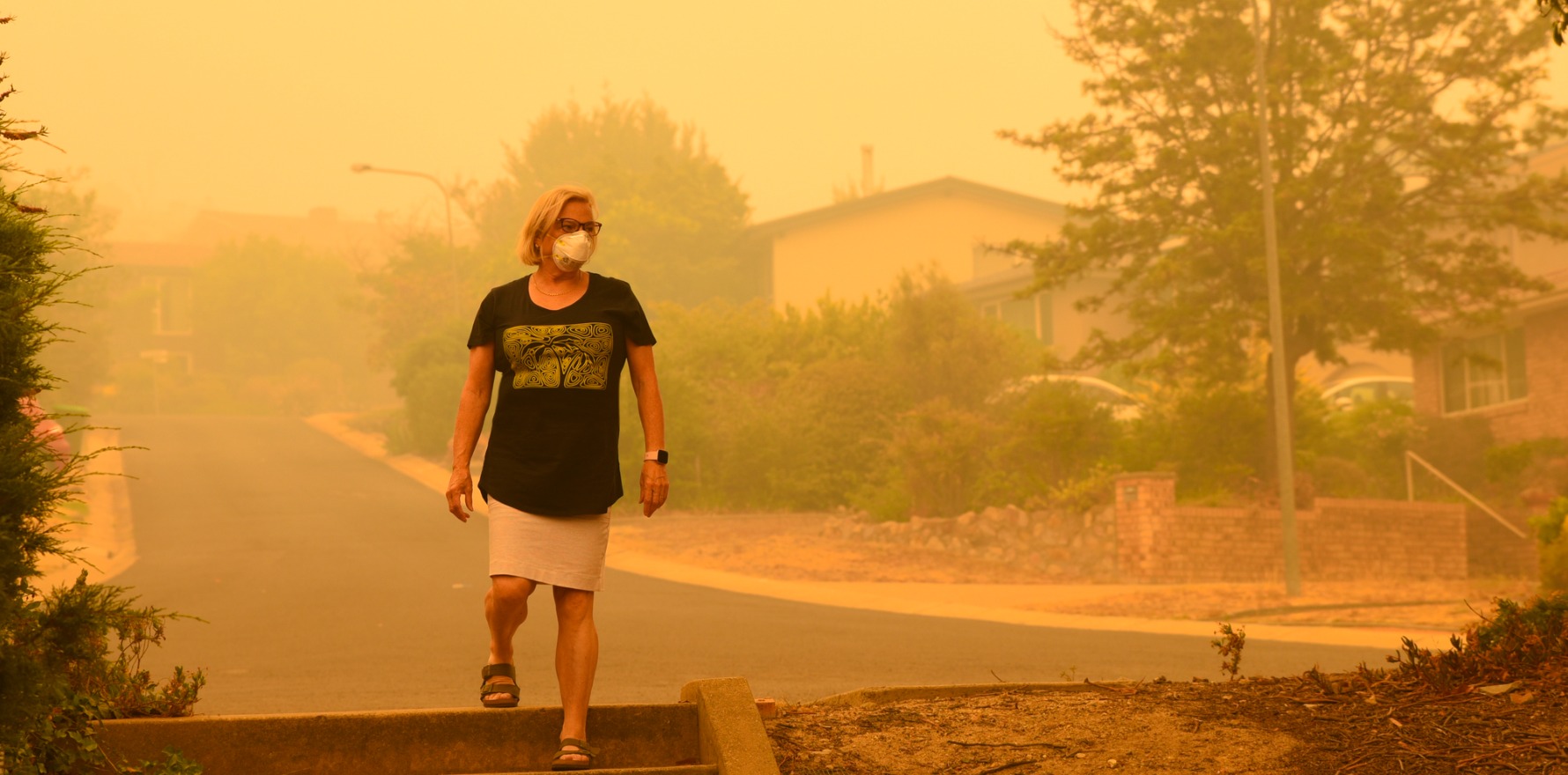Areas that burned in the summer of 2019-20 had higher case numbers – but the reasons why are complex.
It’s summer in a pandemic. So as Australia opens its borders and covid case numbers rise, we’ll likely see the interplay of covid and bushfires.
Our bodies react to SARS-CoV-2, the virus that causes covid, and bushfires in similar ways.
Both affect the lungs. Both can have serious health consequences in vulnerable populations, such as elderly people. Both can have long-term health consequences.
What we know so far
From a simple health perspective, if you have been seriously ill with covid your response to bushfire smoke is likely to be more serious, and vice versa.
However, because covid is still a new disease, the evidence for these effects is still sparse.
So far, the best evidence for the impact of covid on people affected by smoke is from studies in communities that burn biomass (such as plant material or animal dung) as an energy source. In this scenario, a person is exposed to smoke constantly rather than the intermittent smoke that occurs during bushfire seasons.
How about for someone who is exposed to a one-off bushfire? Or who has COVID for the first time? Here are three ways one affects the other.
1. Bushfires and risk
Bushfire smoke causes respiratory symptoms. In people with existing respiratory or heart disease this increase in symptoms can be life-threatening. The same is true for covid.
However, if a person was to be infected with the virus that causes covid and exposed to bushfire smoke at the same time it would be quite difficult to work out if the symptoms were the result of one or the other or both.
What studies have looked at so far is if bushfire smoke increases the likelihood of catching covid.
A study based on the 2020 bushfire season in New South Wales found an association between living in a bushfire-burned area and the incidence of covid. In other words, it was more likely for bushfire-burned areas to have more covid cases than unburnt areas. But there was no link between exposure to particulate matter from all forms of pollution and covid.
Studies in the United States have also found associations between short-term exposure to smoke from bushfires and covid cases and deaths.
Firefighter Darin Sullivan is concerned people exposed to bushfire smoke throughout summer could experience the worst of COVID-19 symptoms. He himself suffered smoke inhalation fighting fires on the South Coast – now he’s urging people to heed advice and stay home. #WINNews6pm pic.twitter.com/zUcAr4bIUw
— Emily Barton (@emilybarton1211) April 1, 2020
The reasons for these patterns might be as simple as bushfire smoke causing what would have been asymptomatic covid to become symptomatic.
Alternatively, the link could be related to the virus “hitching a ride” on pollution particles. Or air pollution may increase the numbers of ACE2 receptors (or special enzymes) in the body, which SARS-CoV-2 uses to infect cells.
2. COVID spread
During a bushfire, if people stay inside at home to avoid smoke exposure, it can decrease the spread of the virus.
However, if people move from house to house to check on other people, it could increase transmission.
In catastrophic bushfires, evacuation often occurs. Again, this could increase transmission by bringing big groups together.
We know outdoor transmission of covid is very rare. So taking people who normally would be outdoors and placing them indoors (with an infected person) could increase transmission rates.
Can air pollution exacerbate Covid-19? Scientists are positing that ambient air pollution might affect our response to the virus. Read more about the link between air pollution and respiratory infections: https://t.co/b6sDkiziRo#COVID19 #AirPollution #AirQuality #prevention pic.twitter.com/PHmeRZSRiO
— Delos (@DelosLiving) April 23, 2020
Another consideration is vaccination rates, which are lower outside cities in Australia. So in areas with bushfires, the population is more vulnerable to covid. In these areas, people are more likely to have underlying health conditions that make them more vulnerable to covid, such as heart or lung disease.
3. Testing rates rise
If we accept people are getting tested for covid because they have symptoms, then we also have to accept people are more likely to have tests during a bushfire. That’s because smoke makes people cough and irritates their nose (both are covid symptoms) and people with heart problems are often breathless, another covid symptom.
My covid test result was negative, now I can rest assured that my cough is merely a result of copious bushfire smoke giving me an asthma attack.
— Wine E. Coyote (@LiamSSmith) February 2, 2021
It would also be reasonable to expect volunteers from different regions and first responders from different regions would have surveillance covid testing. If you do more testing, you find more COVID. Once again, covid numbers would increase.
In a nutshell
The link between covid and bushfires is complex. Symptoms may overlap and our behaviour in response to one emergency affects the other. Then there’s the complex biology of how our body reacts to particulate air pollution released during bushfires.
The best advice to avoid the adverse health effects of covid and bushfires is to avoid exposure to both. Wearing a N95/P2 mask is a good way to safeguard yourself from bushfire smoke and covid.
Brian Oliver, research leader in respiratory cellular and molecular biology at the Woolcock Institute of Medical Research and professor, Faculty of Science, University of Technology Sydney
This article is republished from The Conversation under a Creative Commons license. Read the original article.


